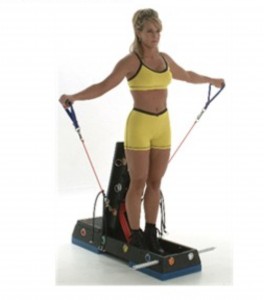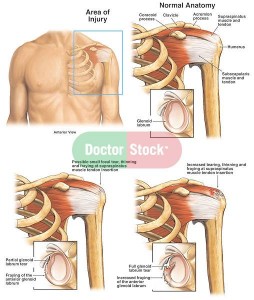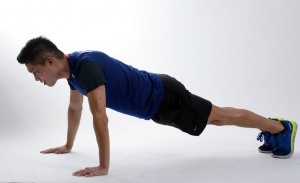It’s tough to maintain enthusiasm for working out when you’re in pain–specifically if the workout is weightlifting. Shoulder pain, for example, is a common complaint among weightlifters, bodybuilders, and powerlifters. It usually develops as a repetitive motion injury after years of lifting heavy and, often, using improper technique. That’s not to say that people who have been lifting for years who experience shoulder pain don’t know what they’re doing. It’s just that they may not be aware that there are alternative ways to structure their workouts that will result in less wear and tear on their shoulder joints.
On Bench Pressing
How much ya bench? by Shakey74
“Howmuchyabench?” is a phrase frequently heard everywhere from weight rooms to bar rooms. Bench presses are the most common chest exercise, and one of the most common resistance exercises in general. While the bench press is effective for building chest muscles, it’s also rough on your shoulder joints. Unless you experience shoulder pain while bench pressing, you don’t have to completely give up that essential chest exercise. However, you should know that there are other exercises you can perform that won’t aggravate your shoulders like the bench press does.
Muscle and Fitness says that you should start doing more push-ups than bench presses, even advising that you entirely switch out one for the other. If your shoulder pain isn’t chronic, it’s not necessary to give up pressing, but do incorporate more push-ups and cut back on the bench. Also, it’s easy to get in a pushing rut when you’re trying to build chest muscles, but you can avoid shoulder pain by building your back muscles so that they balance your physique. When you ignore your back and focus too much on working the chest, your pecs will pull your shoulders forward. Your arms will also tend to turn in, and the entire posture will set you up for shoulder pain. The solution is to add more heavy pulling exercises, such as weighted rows, to your workout routine. Also, never underestimate the valuable effects of proper form when doing any exercise.
The Lateral Raise Dilemma

Using bands to do lateral raises offers better resistance that is easy on your joints.
Lateral raises are another exercise that notoriously cause shoulder pain to flare up. In the December 2015 issue of Muscle and Fitness1, Certified Strength and Conditioning Specialist Sean Hyson explains that your posture during this exercise is everything when it comes to avoiding shoulder pain. If you were taught to stand perfectly upright while performing lateral raises, you were set up for impinging your shoulder joints. Hyson recommends hinging your body at the hips so that you’re bending forward slightly. Remember to keep your elbows bent a little, raise the weights no higher than shoulder level, and maintain control as you lower them. Alternatively, using resistance band equipment such as the TargitFit Trainer to do lateral raises won’t put as much pressure on your shoulder joints and will provide linear variable resistance to maximize your workout.
The Core of the Problem

Building strength in your rotator cuffs will stabilize your shoulders and reduce chances of pain and injury. Image by Beth Scupham/Flickr
According to Bodybuilding.com, weak rotator cuffs are the biggest issue with shoulder pain and injuries. You have to admit, you don’t often (if ever) work in a rotator cuff day amid your weekly workout schedule. You don’t have to dedicate an entire day to them, but including a few exercises once a week to work the four small muscles that stabilize your shoulders will pay off in less shoulder pain and increased strength for other upper body exercises. After doing some doorway stretches to stretch and prepare your chest and the backs of your shoulders, perform three sets of 10 reps each of exercises such as
- Cuban Presses
- Cable Rotations (external and internal)
- Dumbbell External Rotations
Naturally, you don’t want to do your rotator cuff exercises on the same day or the day before you work chest and shoulders, so schedule at least 48 hours in between to allow your rotator cuffs to recover.
1Sean Hyson, CSCS, “Pain-Free Shoulders,” Muscle & Fitness, December, 2015, 58



Hope you are well! I’m Tyler and I’m contacting you from Myprotein, which is the biggest sports nutrition brand in the UK and Europe, and are quickly -growing in the US. I love your blog – (Love the overall balance which you suggest to your blog viewers. Fitness is a lifestyle!)
I’d love for you to try out some Myprotein products to feature on your blog. As well as different protein powders, like our bestseller Impact Whey Protein, we make single-ingredient peanut butter, supplements, fitness wear and protein treats. Let me know what you’d like to try and I’ll get them out to you! Look forward to speaking with you soon!